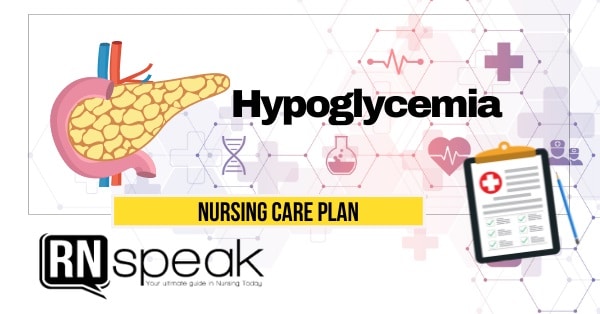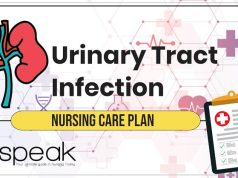Hypoglycemia is not a disease but a condition, which is brought about by underlying comorbidity called Diabetes Mellitus.
It is a result of several situations like an overdose of insulin, or oral hypoglycaemic agents, delay in eating or taking less food than usual, alcohol intake, nutritional imbalance, or overexertion from vigorous exercise activity or work. It can be said to be hypoglycemia if the blood glucose level is below 60mg/dl.
The client may experience the following manifestations
- Increased hunger
- Dizziness or light-headedness
- Weakness, some apprehension
- Difficulty concentrating, changes in behavior like irritability
- Diaphoresis, cold clammy skin
- Sleeplessness, confusion
- A rapid, pounding pulse
These manifestations may vary in every individual, so they should take note of it to determine their symptoms. Prolonged and severe low blood glucose levels could be life-threatening as it could result in coma and in some, paralysis.
Clients who are at risk for hypoglycemia should be educated on the following aspects
-signs and symptoms of hypoglycemia, insulin peak, and action
-preventive measures and compliance to regular blood glucose monitoring
-compliance to diet, exercise, and medication regimens
-to carry an identification badge or Medic alert bracelet so that during times of emergency, proper care can be provided immediately
Hypoglycemia Nursing Care Plan – Risk for Altered Cerebral Tissue Perfusion
Hypoglycemia Nursing Care Plan Full Text
Nursing Diagnosis
Risk for Altered Cerebral Tissue Perfusion related to inadequate glucose supply to the brain.
Assessment
Subjective:
“I just feel dizzy…) – verbatim of a client.
Objective:
Sweating
Trembling hands
Recent blood glucose level: 2.9mmol/L
PP: 102bpm
RR: 21bpm
BP: 110/70mmHg
* High-risk diagnosis is supposed to have no subjective and objective data since it means that the condition has not yet ensued. This is only to provide an idea about the condition of the client.
Inference
Hypoglycemia is a condition when there is inadequate blood glucose supply for the body’s energy consumption needs. A blood glucose level of below 60mg/dl can define this condition and it is primarily due to an underlying disease, called diabetes mellitus.
In connection, glucose is an essential component of the brain’s activity. If the brain is deprived of glucose for a long time, the brain cells can be destroyed leading to permanent brain damage (coma), memory loss, and decreased learning ability.
Outcome
After 8 hours of nursing care, the client will be able to resume normal blood glucose levels and be free from risk for altered cerebral tissue perfusion.
Nursing Interventions
- Administer fast-acting sugar-containing food/ drink i.e. orange juice or candy.
Rationale
-Fast-acting sugar or simple sugars are easily digested and absorbed compared to complex sugars. If necessary, do not give chocolates since it requires a longer time to be absorbed in the body and at the same time, it has unnecessary fats.
- Check blood sugar level on the onset of symptoms and recheck again after treatment within 15 to 30 minutes (until the blood sugar level is within or more than 100mg/dl).
Rationale:
Monitoring the blood glucose level signifies the need for more or just enough intake of carbohydrate/ sugar; to prevent overeating.
- After ingestion of simple sugars, the client may pursue a small snack or if it is meal time, he may consume his meal right away.
Rationale:
Protein, fats, and other nutrients, the same as carbohydrates which provides energy to the body.
- Assess for family history of diabetes, medications taking, exercise, and diet program and other essential data from the client.
Rationale:
It could provide baseline data for the client’s treatment regimen. The client may have delayed his meal, had rigid exercise activity or had taken some other medications prior to onset; adjustment or modification may be needed.
- Encourage the client to verbalize the signs and symptoms he felt during the onset and tell him to familiarize himself of these symptoms.
Rationale:
Individuals may feel varying symptoms of hypoglycemia and it may be the same every time it occurs.
- Educate client to monitor blood glucose regularly and should take with him any sugar-containing food every time he would go out for work or any activity.
Rationale:
It could help in times symptoms of hypoglycemia may once again occur.
- Emphasize to take or wear any identification card notifying that he has a medical condition and it should have significant numbers like his physician or family members and medications, if there is any.
Rationale:
In case, the client may feel hypoglycaemic again especially if he becomes unconscious, someone could provide proper care to him.









Hi to every body, it’s my first visit of this blog; this web site carries amazing and actually fine stuff for visitors.